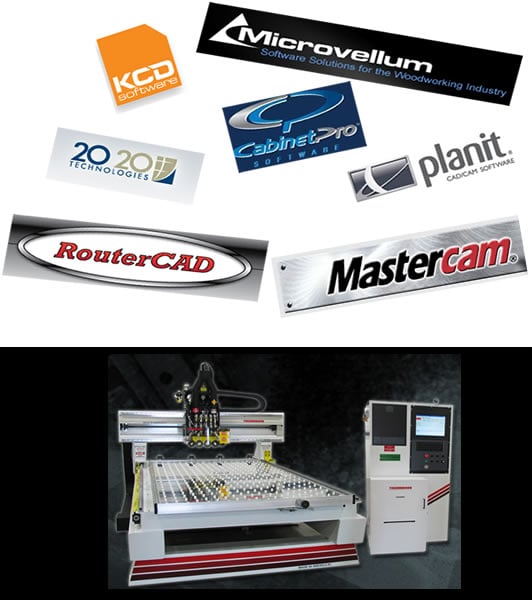Delcam's ArtCAM software enabled Adirondack Studios to complete successfully a project to produce five giant chandeliers for the Mohegan Sun Casino at Pocono Downs, Pennsylvania.

For over 30 years, Adirondack Studios, based in Argyle, New York, has helped to design and build themed environments for theatres, arenas, exhibit halls, ballrooms, parks, restaurants, casinos, amusement parks, supermarkets, museums, stadia and marinas. About a year ago, the company began using the ArtCAM artistic CADCAM software to program the CNC routers used to manufacture the majority of the company's products.
"The software that we used in the past for CNC programming worked fine for routine jobs but many of the projects that we get involved in are far out of the ordinary," said Bob Gregory, Senior Router Operator. "We spent too much time watching the clock while we were machining and ran into quite a few bugs. Also, the software developer was not as responsive as we wished when we called in for support."
"We had heard that a number of our competitors were using ArtCAM with very good results so we decided to give it a try," Mr. Gregory continued. "From the very beginning we felt that ArtCAM was a more finished product, more robust, with much higher performance. The tutorials make it very easy to take advantage of the many advanced features of the software. The support provided by Delcam has been superlative and they do listen to, and implement, user suggestions for improving the software."
Adirondack Studios' designers began the construction of the chandeliers by building a 3D model in AutoCAD. The file was imported into ArtCAM to generate the CNC program to machine a positive shape in low-density foam. This was used by a subcontractor to vacuum-form the plastic bowl segments. These were then painted to look like alabaster.
In a similar way, the casting department used ArtCAM to make a mould to cast the grouse models that would be used to decorate the chandeliers. A black-tinted silicone rubber was used to give the grouse the appearance of wrought iron.
The next step was to create a bird's nest pattern and weave it around the circumference of the bowl. ArtCAM allowed the ways in which the strands crossed each other to be varied for a more natural appearance. "Birds do not use a CNC machine to build their nests so it took considerable effort to get the correct look," Mr. Gregory said. Mr. Gregory generated a CNC program to cut the bird's nest negative shape into MDF. It took only fifteen minutes to create the program compared with at least four hours that would have been needed with the previous software. The mould was used to cast the bird's nests from the same silicon rubber used for the grouse. Finally, the birds and the nests were glued to the bowl of each chandelier.
The finished chandeliers were then installed in the casino. They formed part of a $208-million renovation of the site, aimed at transforming it into the area's leading entertainment complex.




